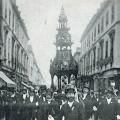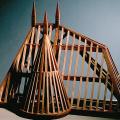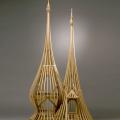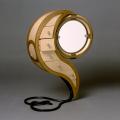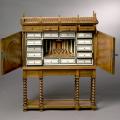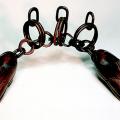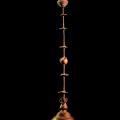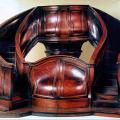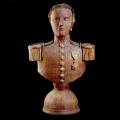Our collections
Wood : Choose a masterwork...
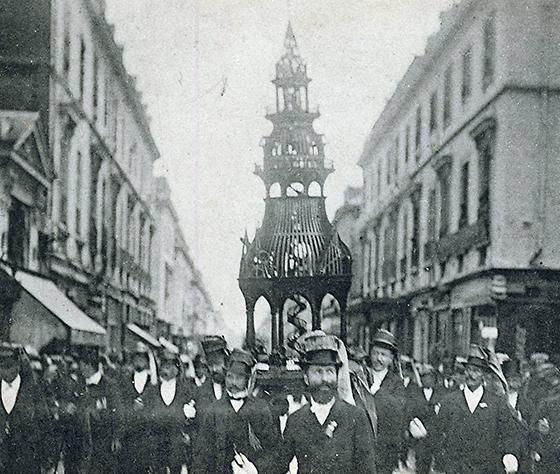
This masterpiece was built in 1853 by the compagnon carpenters du Devoir (also said ‘passant’) of Tours. It was the pride of the ‘cayenne’ (the local section) and was paraded in the streets in a procession on St Joseph’s day (March 17th). This type of large scale masterpiece combines all the difficulties that arise in the drawing and shaping of each single part.
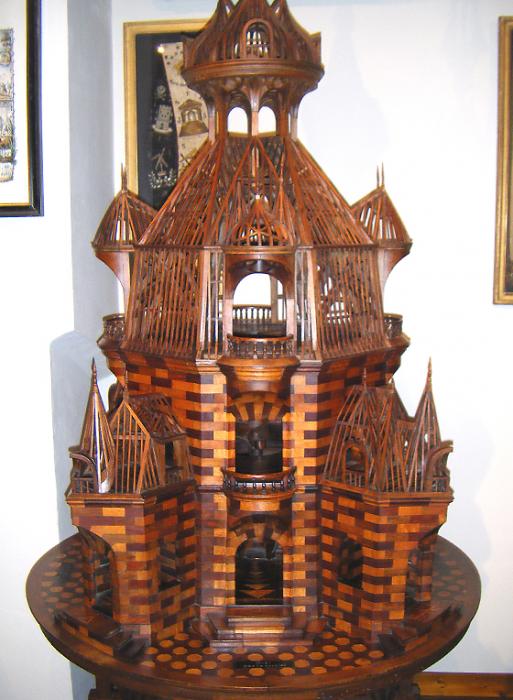
This masterpiece is the work of the compagnon carpenters du Devoir de Liberté, aka ‘Indiens’. They had opened the local section in Tours only three years before they decided in 1869 to create it under the direction of compagnon Larrouil, aka Bordelais Beau Retour, with the idea of surpassing their rivals, the compagnons ‘passants’. In the lower part, the wood blocks, treated as stones, demonstrate a perfect mastery of stereotomy.

This piece marks how far in his training the young carpenter has reached. The intersection of a round tower with a hip engenders problems to be solved geometrically with the results being transferred into expertly fitted wood parts. Made in 1994.

This masterpiece by Tourangeau l’Ami du Trait, compagnon carpenter des Devoirs, is his rendering of the set task in the 2004 competition for the title ‘one of the best craftsmen of France’.

Realised in walnut by Agricol Perdiguier, aka Avignonnais la Vertu, in 1825 in Bordeaux while on his Tour de France. The tour de force resides in the ceiling underneath : the uprights, cross-pieces and panels are all curved to a precise warp. Its pitch is so regular that it can slide in and out of the grooves in the strings.
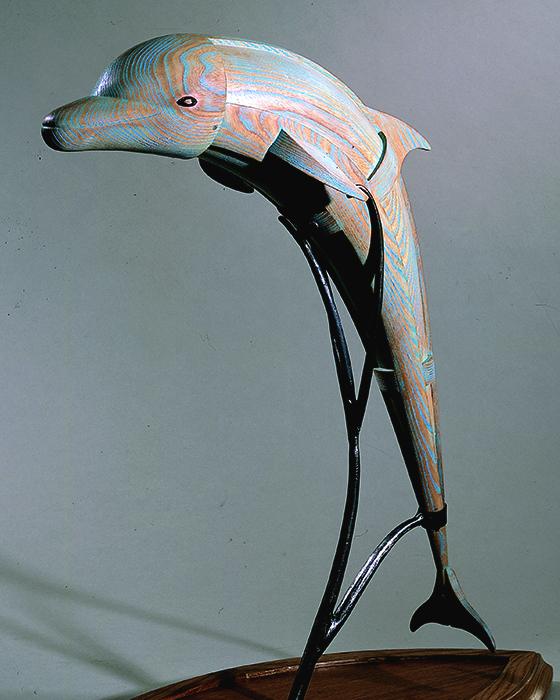
This leaping dolphin illustrates perfectly the creativity of modern day compagnons. It is made of blue-stained ashwood, not carved as a sculpture but built of framed panels, and was the reception piece of Dauphiné le Cœur Dévoué, compagnon joiner du Devoir de Liberté.
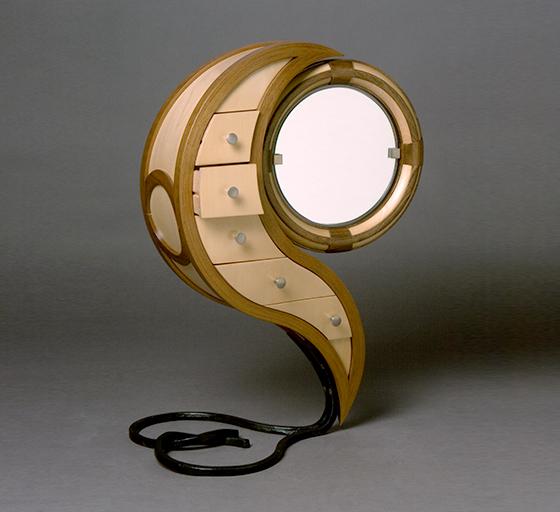
This dressing-table illustrates how the candidate took advantage of the possibilities on offer to create this reception piece : harmonious hues of the woods (plane and sycamore), asymetrical drawers, reclining mirror. It is the work of Savoyard le Soutien du Tour de France, young compagnon des Devoirs Unis in 2006.
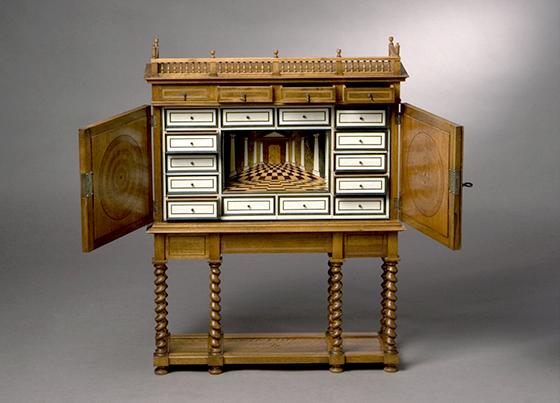
This cabinet is the reception piece of Languedoc la Pensée Réfléchie, compagnon cabinet-maker du Devoir de Liberté. Made in 1986, it allies precious woods with mother-of-pearl and uses an optical deception to accentuate its apparent depth. The alternating black and white squares and the columns are reminiscent of a temple, a theme recurrent in Compagnonnage to recall its legendary origins (Solomon’s temple) and the sacred character of the crafts.
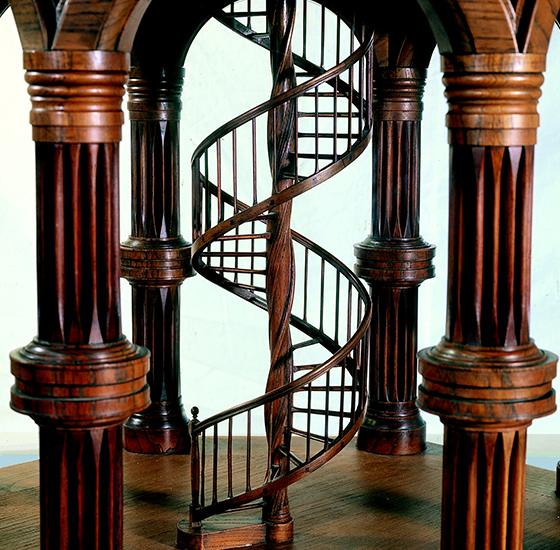
The great masterpiece of the compagnon cartwrights du Devoir of Tours is the work of Philippe Leroux, aka Tourangeau la Clef des Cœurs. Built in the shape of a temple to the glory of the craft in 1887-1888, various parts of a carriage are used in its composition : the columns are made of spokes or shafts or poles, the arches of wheel-rims, the cupola of superposed wheels. The little figurine is St Catherine, the patron saint of the craft.
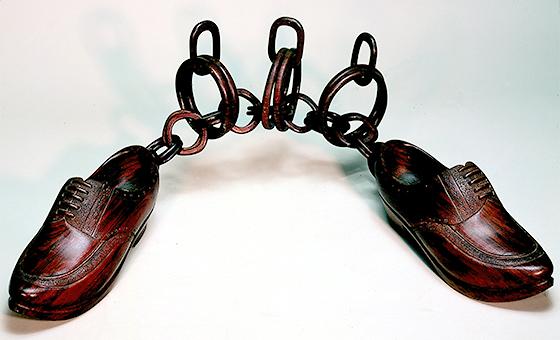
Compagnon clog-maker des Devoirs Unis Marcellin Gautier, aka Rennois l’Amour du Travail, is the creator in 1933 of this pair of linked walnut clogs. Shaped as shoes, they are tied to each other by 25 links of various shapes (round, square, rectangular, single or double) and the whole piece was carved in a single chunk of wood.

Turner compagnons used to judge the aptitude of a candidate on his ability to turn a ‘shiverer’: a spindle as thin as possible ornamented with rings formed in the same piece of wood.
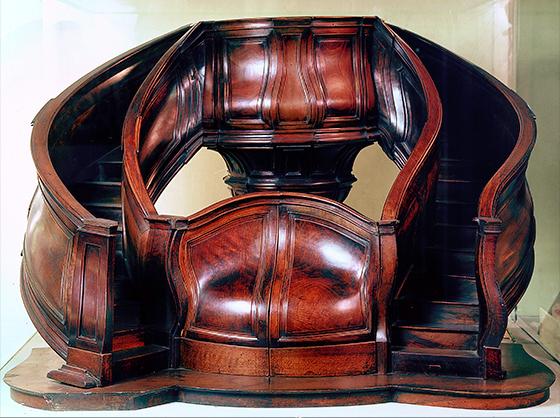
In 1804, the compagnon joiners du Devoir de Liberté (or ‘gavots’) put the most skillful of their members to the task in a competition against their rivals the compagnons joiners du Devoir. The losers were to forgo employment in the city of Montpellier for a century ! But the two parties could never find a jury ready to take the responsibility of pronouncing a winner. The pulpit, assembled using pegs and glue, was originally surmounted by a sounding board that has been lost.
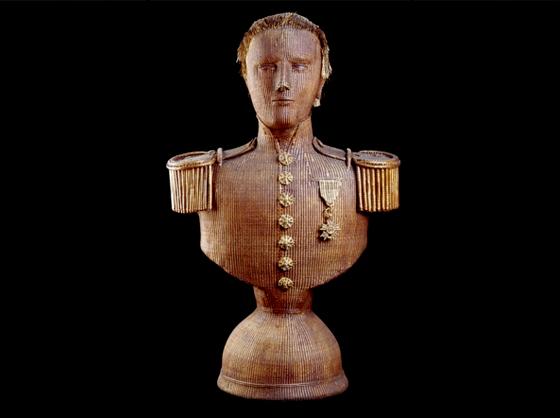
This wickerwork bust is the masterpiece of a compagnon basket-maker du Devoir, produced in the 19tth century. It is supposed to depict the Imperial Prince, son of Napoléon 3rd who was killed by the Zulus in 1879.

